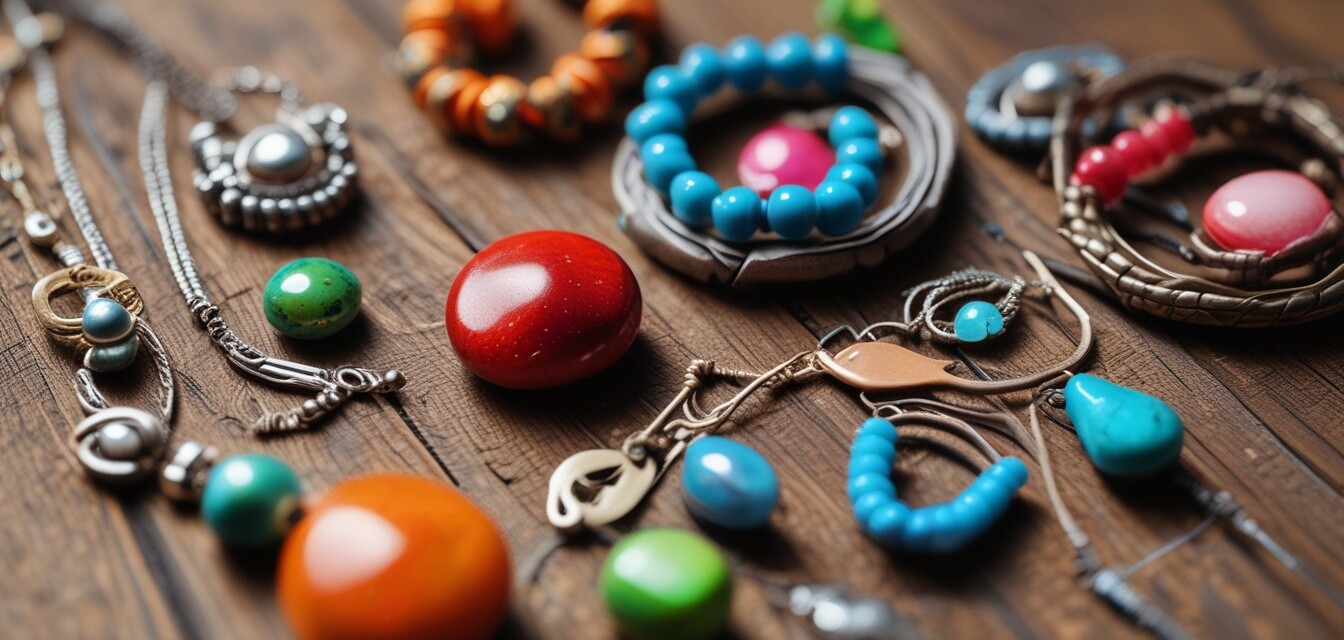
The Importance of Upcycling in Jewelry Production
Key takeaways
- Upcycling reduces waste in the jewelry industry and promotes sustainability.
- Artisan techniques enhance the uniqueness and quality of upcycled pieces.
- Supporting upcycled jewelry contributes to positive environmental impacts.
- More consumers are prioritizing ethical and sustainable purchases.
- Understanding certifications is key to identifying truly sustainable products.
Upcycling has emerged as an essential practice within the jewelry industry, significantly impacting its sustainability landscape. As consumers become more conscious of their purchasing decisions, upcycled jewelry not only appeals to the eco-minded but also tells unique stories of innovation and creativity.
What is upcycling?
Upcycling refers to the process of transforming waste materials, by-products, or unwanted products into new items of higher quality or value. In the context of jewelry, this means taking discarded materials—such as old jewelry, metal scraps, and even fabric—and crafting them into new, desirable pieces.
Why is upcycling important in the jewelry industry?
Understanding the significance of upcycling in jewelry production involves exploring its multiple benefits:
- Waste Reduction: Upcycling helps decrease the amount of waste that ends up in landfills.
- Resource Conservation: By reusing materials, we reduce the demand for newly mined resources.
- Support for Local Artisans: Upcycling often involves local artisans who promote handmade goods, ensuring fair labor practices.
- Unique Designs: Each piece of upcycled jewelry is often one-of-a-kind, appealing to consumers looking for something special.
How upcycling is practiced in the jewelry industry
Upcycled jewelry can take on many forms, and artisans utilize different techniques to create exquisite pieces.
Common materials used in upcycled jewelry
| Material | Description |
|---|---|
| Old jewelry | Broken or unused jewelry can be disassembled and reimagined into new designs. |
| Metal scraps | Leftover metal pieces from manufacturing can be melted down and reformed. |
| Natural materials | Organic materials, like shells and stones, can be repurposed into stunning pieces. |
| Recycled glass | Glass objects can be reshaped and turned into beautiful beaded jewelry. |
Successful upcycled jewelry lines
Many brands are making waves in the jewelry industry through their commitment to upcycling. Here are attributes that define successful upcycled jewelry lines:
- Artistry: Featuring skilled artisans who can create intricate designs from discarded materials.
- Transparency: Providing information about their sourcing practices and the materials used.
- Community Engagement: Involving local communities in the creation process, promoting social responsibility.
The role of consumer choices
As consumers become increasingly aware of the environmental impact of their purchases, their choices can drive change within the industry. Supporting upcycled jewelry not only encourages artisans but promotes sustainability as a valuable commodity. By choosing these items, consumers encourage brands to prioritize ethical practices.
Challenges faced by upcycled jewelry makers
Despite the positive aspects of upcycling, artisans face challenges in promoting their craft:
- Market Competition: Competing against mass-produced jewelry can be difficult.
- Consumer Awareness: Many consumers are still unaware of the benefits of upcycled products.
- Quality Perception: Some perceive upcycled items as lower quality, despite superior craftsmanship.
Certifications for sustainable practices
When shopping for upcycled jewelry, look for certifications that indicate the product's sustainability. Certifications help consumers identify brands that adhere to ethical practices. Some common certifications include:
| Certification | Description |
|---|---|
| Fair Trade | Indicates products were made under fair labor conditions. |
| Recycled Content | Denotes that a product contains a specified percentage of recycled materials. |
| Sustainable Jewelry Council | A mark for jewelry brands committed to sustainability. |
Conclusion
Upcycling in the jewelry industry plays a vital role in fostering sustainable practices and reducing waste. By understanding the importance of supporting upcycled jewelry brands, consumers can make choices that contribute to a healthier planet while enjoying the beauty of unique, artisanal pieces.
Pros
- Reduces waste and promotes sustainability.
- Supports local artisans and fair labor.
- Provides unique, one-of-a-kind jewelry pieces.
- Encourages mindful consumerism.
Cons
- May face competition from mass-produced alternatives.
- Consumer awareness of benefits can be low.
- Misunderstandings about quality and craftsmanship.
Explore more about sustainability
For those who want to dive deeper into sustainable practices in jewelry production, check out our other articles in the Sustainability Practices section, where we explore various facets of ethical sourcing and eco-friendly practices.